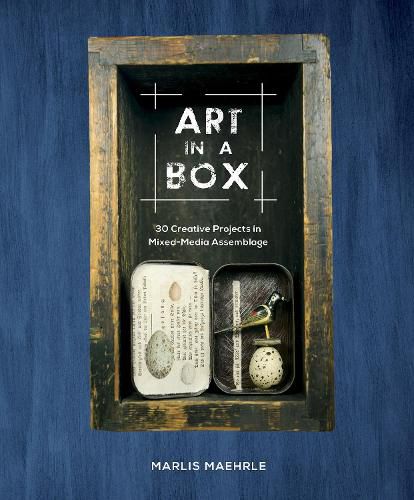Readings Newsletter
Become a Readings Member to make your shopping experience even easier.
Sign in or sign up for free!
You’re not far away from qualifying for FREE standard shipping within Australia
You’ve qualified for FREE standard shipping within Australia
The cart is loading…






In the multimillion-dollar crafter market, this is one art form that appeals to artists and makers of all kinds, whatever their other mediums may be. Also termed 3-D collage, shadow boxes, or assemblage, it’s based on how you choose and arrange items in a box (term used loosely!) to create a visual message. With 30 intriguing projects of varied complexity, this complete guide teaches techniques for arranging, organising, mounting, and creating narratives. The boxes use easily available items like cigar boxes, unusual packaging containers, or mint tins. The form’s history is covered too, including the curiosity cabinets of Renaissance Europe, the found-object assemblage boxes created in the 20th century by Joseph Cornell, and the works artists create today. Includes examples to teach arrangement, grouping, and assembly and offers extra inspiration with a 40-page gallery of a wide range of works by expert artists. AUTHOR: Marlis Maehrle teaches paper- and book-crafting courses in the US and Germany. Her work has been featured in Uppercase and 500 Paper Objects. She belongs to the International Association of Hand Papermakers and Paper Artists (IAPMA)
$9.00 standard shipping within Australia
FREE standard shipping within Australia for orders over $100.00
Express & International shipping calculated at checkout
In the multimillion-dollar crafter market, this is one art form that appeals to artists and makers of all kinds, whatever their other mediums may be. Also termed 3-D collage, shadow boxes, or assemblage, it’s based on how you choose and arrange items in a box (term used loosely!) to create a visual message. With 30 intriguing projects of varied complexity, this complete guide teaches techniques for arranging, organising, mounting, and creating narratives. The boxes use easily available items like cigar boxes, unusual packaging containers, or mint tins. The form’s history is covered too, including the curiosity cabinets of Renaissance Europe, the found-object assemblage boxes created in the 20th century by Joseph Cornell, and the works artists create today. Includes examples to teach arrangement, grouping, and assembly and offers extra inspiration with a 40-page gallery of a wide range of works by expert artists. AUTHOR: Marlis Maehrle teaches paper- and book-crafting courses in the US and Germany. Her work has been featured in Uppercase and 500 Paper Objects. She belongs to the International Association of Hand Papermakers and Paper Artists (IAPMA)